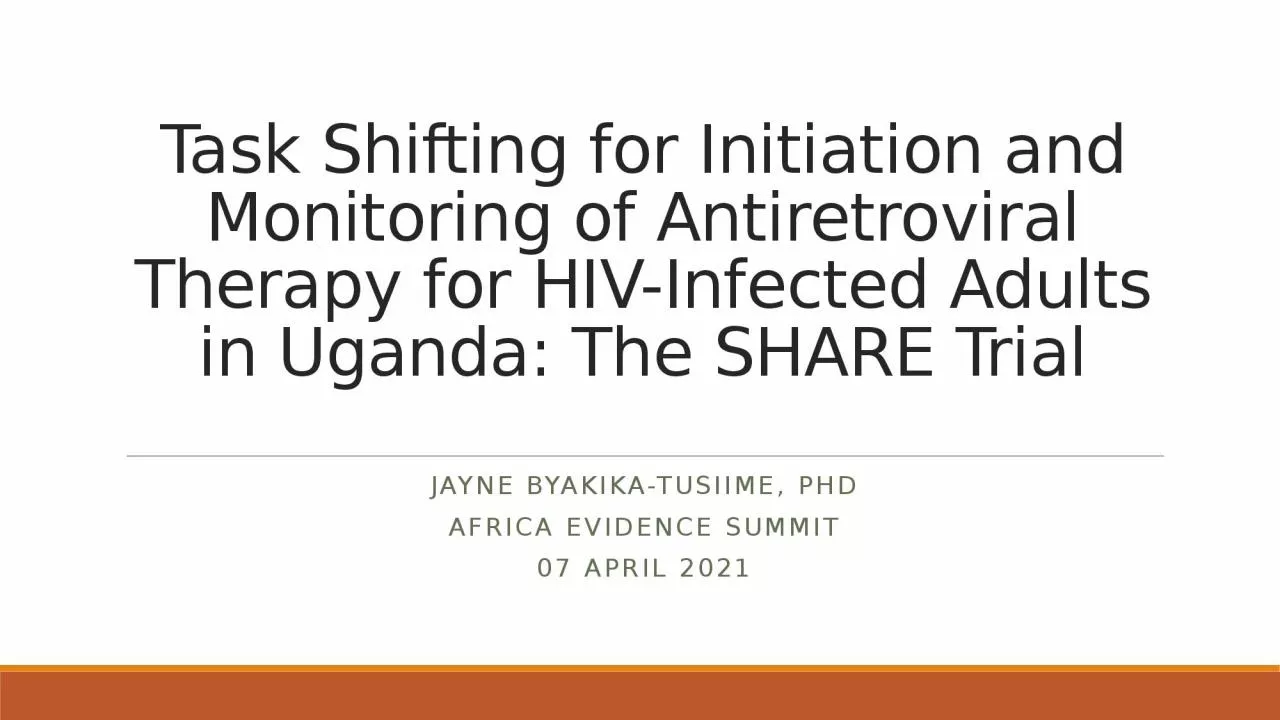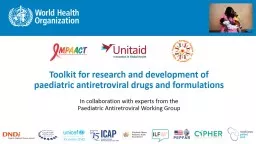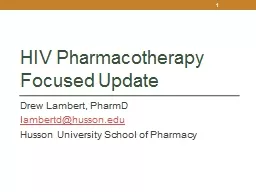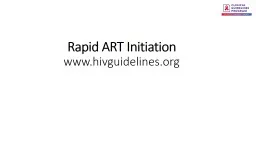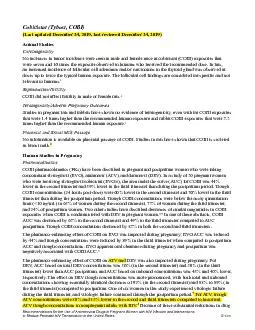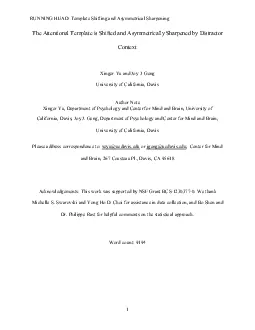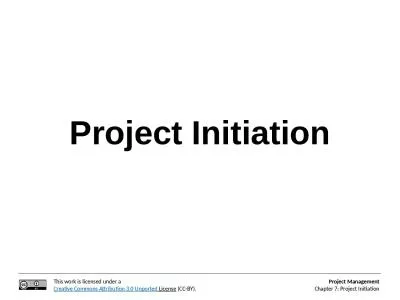PPT-Task Shifting for Initiation and Monitoring of Antiretroviral
Author : heavin | Published Date : 2022-06-15
Therapy for HIVInfected Adults in Uganda The SHARE Trial JAYNE BYAKIKATUSIIME PHD AFRICA EVIDENCE SUMMIT 07 APRIL 2021 Presentation Outline Background to the study
Presentation Embed Code
Download Presentation
Download Presentation The PPT/PDF document "Task Shifting for Initiation and Monitor..." is the property of its rightful owner. Permission is granted to download and print the materials on this website for personal, non-commercial use only, and to display it on your personal computer provided you do not modify the materials and that you retain all copyright notices contained in the materials. By downloading content from our website, you accept the terms of this agreement.
Task Shifting for Initiation and Monitoring of Antiretroviral: Transcript
Download Rules Of Document
"Task Shifting for Initiation and Monitoring of Antiretroviral"The content belongs to its owner. You may download and print it for personal use, without modification, and keep all copyright notices. By downloading, you agree to these terms.
Related Documents

